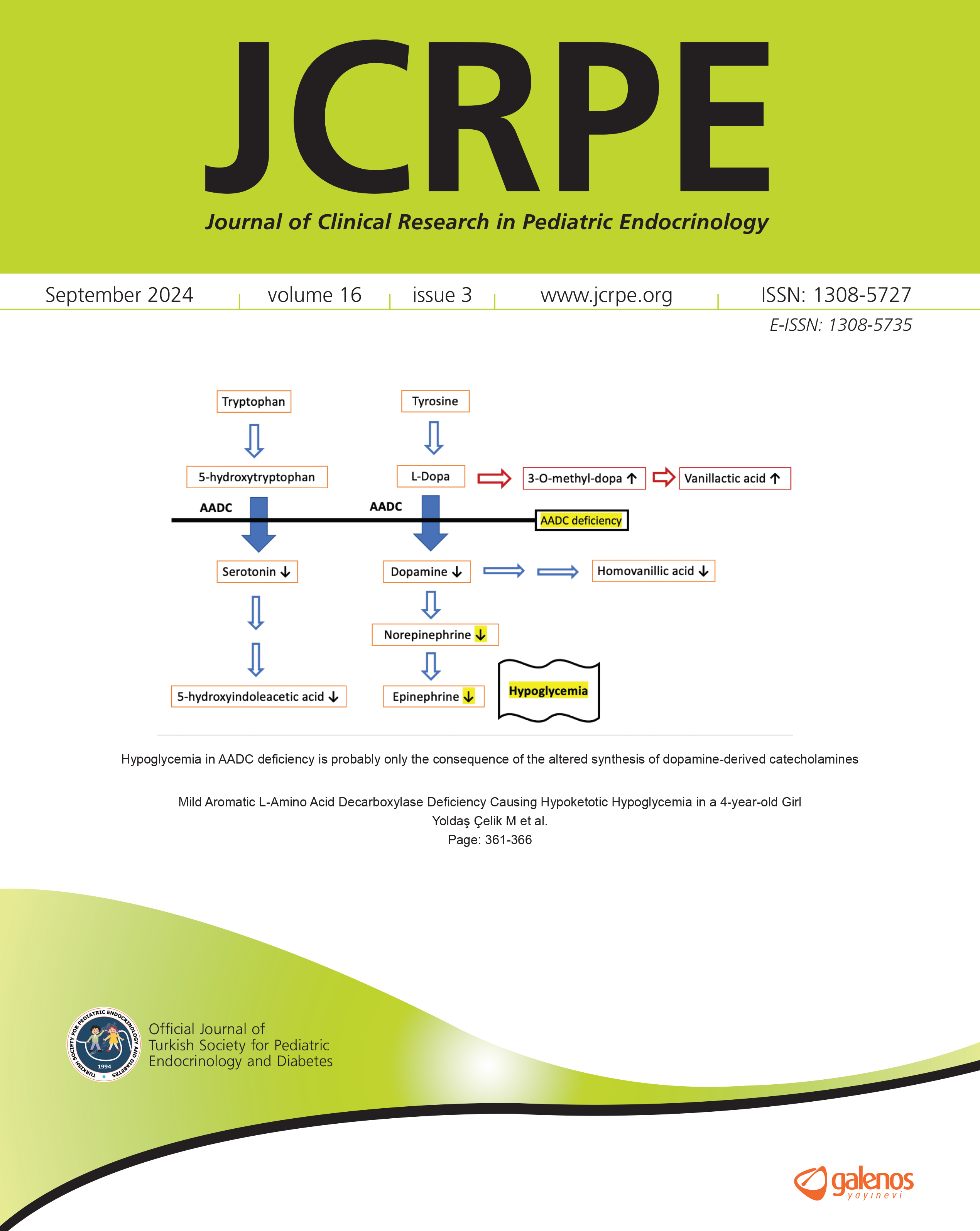Early-onset Chronic Keratitis as the First Presenting Component of Autoimmune Polyendocrinopathy Syndrome Type 1 (APS-1): A Case Report and Review of the Literature
Enver Şimşek1, Tulay Simsek2, Oguz Cilingir31Division of Pediatric Endocrinology, Department of Pediatrics, Eskisehir Osmangazi University School of Medicine, Eskisehir, Turkey2Department of Ophthalmology, Eskisehir Osmangazi University School of Medicine, Eskisehir, Turkey
3Department of Medical Genetics, Eskisehir Osmangazi University School of Medicine, Eskisehir, Turkey
Autoimmune polyendocrine syndrome type 1 (APS-1), also referred to as autoimmune polyendocrinopathy-candidiasis-ectodermal dystrophy (APECED), is a rare monogenic autosomal recessive autoimmune disease. It is caused by mutations in the autoimmune regulator (AIRE) gene. APS-1 is diagnosed clinically by the presence of two of the three major components: chronic mucocutaneous candidiasis (CMC), hypoparathyroidism, and primary adrenocortical insufficiency. A 3.3-year-old girl was presented with a carpopedal spasm to the pediatric emergency clinic. She had a history of recurrent keratitis, and chronic candidiasis as urinary tract infections and oral thrashes. Hypoparathyroidism (HPT) was diagnosed based on low serum concentrations of calcium and parathyroid hormone and elevated serum concentrations of phosphate, and treatment with calcium and calcitriol supplementation was started. Genetic testing revealed homozygosity for nonsense c.769C>T (p.R257X) mutation in exon 6 in the AIRE gene which was reported previously. At the age of 5.6 years, she was presented with an adrenal crisis, and treatment with hydrocortisone and fludrocortisone was started. The reported case highlights that unexplained chronic keratitis in children may be the first and most severe component of this syndrome. The classic triad of APS-1 may also appear in the first decade of life.
Keywords: AIRE, mutation, APS1, keratopathy, children, hypoparathyroidismManuscript Language: English



























